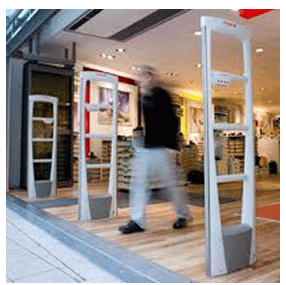 It’s that time of year when all store owners and managers start to make personnel decisions. Remember those people you hired in late August, maybe in September or even as late as October or November? Remember the conversations you may have had with them discussing how this was a “seasonal” position? You may have really dangled the carrot in front of them and told them that if they worked hard and showed initiative they might be retained on your staff after the holidays. Guess what? It’s time now for you to start taking a hard look at your staff and making some decisions and that isn’t always pleasant. Now you have to evaluate those employees and consider whether you want to keep them or you may have to decide if you can afford to keep them. What should you be thinking about at this point with regard to employee retention decisions?
It’s that time of year when all store owners and managers start to make personnel decisions. Remember those people you hired in late August, maybe in September or even as late as October or November? Remember the conversations you may have had with them discussing how this was a “seasonal” position? You may have really dangled the carrot in front of them and told them that if they worked hard and showed initiative they might be retained on your staff after the holidays. Guess what? It’s time now for you to start taking a hard look at your staff and making some decisions and that isn’t always pleasant. Now you have to evaluate those employees and consider whether you want to keep them or you may have to decide if you can afford to keep them. What should you be thinking about at this point with regard to employee retention decisions?
Performance
You may have told the employee that retention after the holiday season would be based on their performance. Did you take time periodically to watch how this person interacted with customers or other employees? Did you ever get any customer complaints about how this employee treated them or compliments about their service? Did you keep track of those complaints or compliments so you would have something to fall back on should you choose to end their employment? Having documentation in hand makes it easier to have those conversations. The other resources you need to rely on are your supervisors. It is wise to have a management meeting to discuss each person’s opinion about a seasonal worker. One person may like the way the employee performed on a cash register while another had issues with sales floor performance. Getting several perspectives will give a better picture of an employee during the season.
Punctuality
Review an employee’s time sheets or attendance record. If you don’t keep track of tardiness or call-outs you should start. Just because a supervisor or manager says someone was always late or always called out does not mean it was so. It often happens that during a busy time or when everything seems to be going wrong that if someone shows up late to work it is inflated in our minds. We are prone to feeling like this is a regular occurrence when in fact it only took place the one time. The employee may have called out another time but the heat of the moment distorts the reality of the employee’s attendance record. Review documentation so you know whether punctuality or attendance was really a problem.
Attitude
I shouldn’t have to include this one but sometimes the obvious isn’t so obvious. What kind of attitude was displayed while this person worked? Did they arrive to work with a negative attitude? Perhaps they were always negative about customers or even talking about other employees. A poor attitude can rub off on others and become a drain on morale. I can’t emphasize enough the importance of getting rid of someone who displays a poor attitude. I should also mention that it is worth giving consideration to someone who always has a sunny disposition. Just as a negative attitude spreads a black cloud over the other workers and can be sensed by customers a positive attitude can have the same impact. Shoppers like feeling welcomed and that their business is appreciated. Co-workers enjoy being around a fellow employee who makes work fun or knows the value of a warm greeting. This does not mean this worker does not have to be able to perform but they may not need to be a superstar if they bring something of value to the table.
Honesty and Integrity
Has this staff member demonstrated an impeccable record of honest behaviors? Are you confident this person has proven to be honest? If you track register overages and shortages take a look back at this employee’s daily register tallies. Be sure there is no concern over shortages or overages either of which could be an indicator of theft. Has there been any question about a purchase or a package check inspection? Is this person always upfront about issues they have encountered? Even something as seemingly small as having a friend punch a time clock for them indicates an integrity issue at the least. If you have a concern it would be in your best interest to cut this person from your roster.
Ending a seasonal employee’s job isn’t always easy but it is necessary. Make sure you use sound criteria and good judgment when deciding if you will keep or release someone after the holidays.
 Big corporations across the globe worry about cybersecurity attacks and the repercussions those attacks have on the corporation’s bottom line. These cybersecurity attacks to their servers and information databases can be costly and can bring with them costly lawsuits as well. But, according to many analysts, employee theft and shoplifting are the more concerning issues affecting the retail industry. They alone account for more than two-thirds of their shrinkage and that figure seems to be rising every year. During the holiday season, those issues become more problematic and costly, and the retail industry looks for ways to prevent the great loses they will certainly suffer during this jolly time.
Big corporations across the globe worry about cybersecurity attacks and the repercussions those attacks have on the corporation’s bottom line. These cybersecurity attacks to their servers and information databases can be costly and can bring with them costly lawsuits as well. But, according to many analysts, employee theft and shoplifting are the more concerning issues affecting the retail industry. They alone account for more than two-thirds of their shrinkage and that figure seems to be rising every year. During the holiday season, those issues become more problematic and costly, and the retail industry looks for ways to prevent the great loses they will certainly suffer during this jolly time. I remember it like it was yesterday. It was a Black Friday morning and we had lines of customers jockeying for position at 16 front end cash registers, two pharmacy registers, a jewelry counter register and 2 registers at our electronics counter. Sure, there were a lot of people, hundreds if not a thousand at one time but we were handling it. I had our Loss Prevention team monitoring cameras, checking receipts at the front doors and walking the floor with “Security” jackets on to deter theft and prevent fights. The store management team had good plans in place for replenishing freight on the floor and giving employees breaks. I had worked with the Store Manager to control the flow of customers into our building and all had gone off without a hitch, no pushing, shoving or fights. I even had a number of police officers at our front doors aiding us with crowd control. We had really planned for every contingency, or so we thought. The one thing that we had not planned for happened and it was a major problem, our register system went down! The audible sighs, snide remarks, and expressions of anger and frustration were heard in one collective voice. All of our managers jumped into action trying to reboot registers and get systems back online. Ever so slowly we got things moving again but it was a nightmare and it made us realize the scary truth, we had not really prepared for everything as well as we thought we had. A number of shopping carts had been abandoned with Black Friday specials in them and no salesfloor staff available to re-shelve the merchandise.
I remember it like it was yesterday. It was a Black Friday morning and we had lines of customers jockeying for position at 16 front end cash registers, two pharmacy registers, a jewelry counter register and 2 registers at our electronics counter. Sure, there were a lot of people, hundreds if not a thousand at one time but we were handling it. I had our Loss Prevention team monitoring cameras, checking receipts at the front doors and walking the floor with “Security” jackets on to deter theft and prevent fights. The store management team had good plans in place for replenishing freight on the floor and giving employees breaks. I had worked with the Store Manager to control the flow of customers into our building and all had gone off without a hitch, no pushing, shoving or fights. I even had a number of police officers at our front doors aiding us with crowd control. We had really planned for every contingency, or so we thought. The one thing that we had not planned for happened and it was a major problem, our register system went down! The audible sighs, snide remarks, and expressions of anger and frustration were heard in one collective voice. All of our managers jumped into action trying to reboot registers and get systems back online. Ever so slowly we got things moving again but it was a nightmare and it made us realize the scary truth, we had not really prepared for everything as well as we thought we had. A number of shopping carts had been abandoned with Black Friday specials in them and no salesfloor staff available to re-shelve the merchandise. How often does it happen? You are in front of your television watching your favorite college football team playing a game and your spouse starts talking to you about their day or what you need from the grocery store. Then suddenly the conversation takes a nasty turn and you are asked for input about the conversation you weren’t really engaged in. The textbook reply, “Yes Dear” or
How often does it happen? You are in front of your television watching your favorite college football team playing a game and your spouse starts talking to you about their day or what you need from the grocery store. Then suddenly the conversation takes a nasty turn and you are asked for input about the conversation you weren’t really engaged in. The textbook reply, “Yes Dear” or


 Have you ever noticed that when a convenience store robbery takes place the crook never demands all of the credit card slips? I have never heard of a bank robber pulling out a gun and yelling for the teller to give them all of the checks in the drawer. What is it the bad guys are always trying to get their hands on…CASH! While Loss Prevention departments do work on credit card and fraudulent check cases our bigger concern is cash theft and fraud. It has been my experience that in many incidents involving a stolen credit card or check, I have been able to work with bank investigators and police detectives to identify and in some cases resolve those crimes. In those situations there is usually a victim as well as a perpetrator of the crime. When it comes to cash loss cases it becomes another matter altogether, the victim is the store. While we may have video of the crime there may not be any other means of tying in additional information. Another issue with cash losses is that the stolen money cannot be tracked further. Stolen credit cards tend to leave a trail of locations where they are used which can lead to greater opportunities to pick up on additional evidence. The same can be true with fraudulent check writing cases. With a cash loss case, once it’s gone you don’t see it again, money is not traced.
Have you ever noticed that when a convenience store robbery takes place the crook never demands all of the credit card slips? I have never heard of a bank robber pulling out a gun and yelling for the teller to give them all of the checks in the drawer. What is it the bad guys are always trying to get their hands on…CASH! While Loss Prevention departments do work on credit card and fraudulent check cases our bigger concern is cash theft and fraud. It has been my experience that in many incidents involving a stolen credit card or check, I have been able to work with bank investigators and police detectives to identify and in some cases resolve those crimes. In those situations there is usually a victim as well as a perpetrator of the crime. When it comes to cash loss cases it becomes another matter altogether, the victim is the store. While we may have video of the crime there may not be any other means of tying in additional information. Another issue with cash losses is that the stolen money cannot be tracked further. Stolen credit cards tend to leave a trail of locations where they are used which can lead to greater opportunities to pick up on additional evidence. The same can be true with fraudulent check writing cases. With a cash loss case, once it’s gone you don’t see it again, money is not traced.

